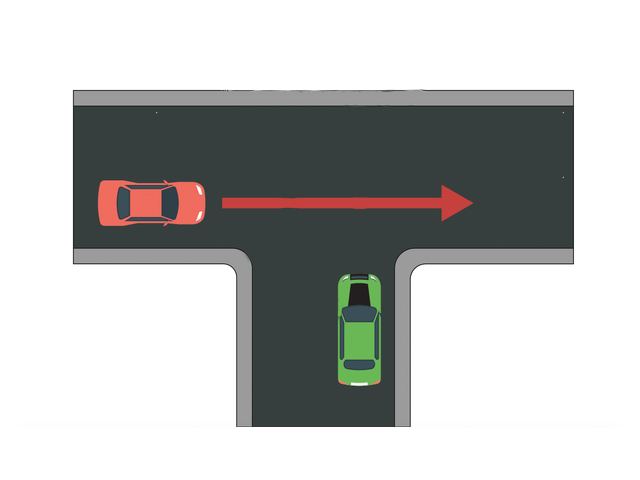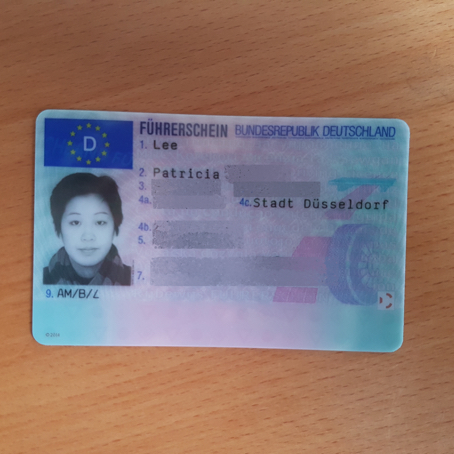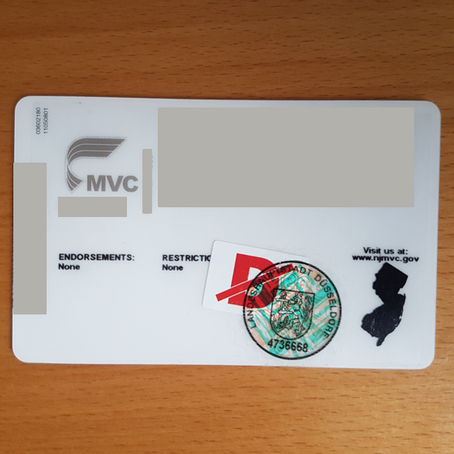
Getting a German Driver's License Part 3: The Practical Test
Having spent months on the bureaucratic process and then finally passing the written exam, I was ready to finally start driving on German roads.
I had to schedule some driving lessons with the driving school and initially, we said ten lessons of two units each should suffice for a license transfer. Each unit consisted of 45 minutes, so I essentially signed up for 15 hours of lessons. I decided to do it using a manual transmission instead of automatic because if you do the test on an automatic car, there is a restriction on your license that you can only drive automatic. Frankly, I thought if I was going to pay for lessons, I might as well learn manual, which is more common here in Europe, while getting used to the roads and signage here.
The best way I can describe learning manual after driving for 15 years only with automatic cars is this: Imagine you’ve been doing something your whole life a specific way, like the way you write your letters. Writing a capital “A,” your first line goes downward to the left, then downward on the right, and the finishing line goes from left to right. It’s natural writing “A” like this, and you don’t need to think about it. You just do it.
Now, imagine someone told you, “Nope, you have to write ‘A’ like this: the first line is the middle one, which goes right to left, then the second line is the righthand one, but starting from the bottom and going upwards, and then the lefthand one also from bottom to top.” What you learned isn’t wrong per se, but for the test, you have to write it like how they taught you in this new way unless you want to be stuck using a pencil forever and never be able to use a pen. That’s what learning manual felt like for me.
On top of learning to drive manual, I also had to get rid of some bad habits:
- Relying mainly almost to solely on mirrors when backing up instead of looking backwards;
- Switching lanes too early when there’s still a solid line that changes into a dotted line;
- Driving slightly above the speed limit (i.e. if it says 50, I’ll drive 55-60);
- Not paying attention to the rule “right before left,” which doesn’t exist in the US (more on this in a bit);
- Driving in kilometers (again, more on this in a bit);
- Letting my foot off the clutch way too quickly as if it’s the gas pedal on an automatic car;
- Forgetting to turn on the parking brake because it’s a manual car.
The first lessons were rough and I constantly stalled out, but sitting in a car clearly marked with a “Fahrschule” (driving school) sign on top of the car kept me pretty calm. Stalling wasn’t really that unexpected. I even went with my sister-in-law Katrin to a practice course (“Verkehrsübungsplatz”) on the weekend to practice shifting gears, which helped a lot.
But more on two unexpected problems I had…
The Rule “Right Before Left”
I learned the rule “right before left” when I did my theoretical test, but doing it in practice is a completely different ballgame. Here’s a diagram that explains it for non-Europeans:

The vehicle to the right takes precedence over the cars to the left. In this image, the blue car would go first, then the red one, and finally, the green one. Every car needs to give way to the one on the right.
This rule also holds true if you’re at a t-junction and there’s no signage whatsoever. To show what I mean, here’s another diagram:

In the US (at least where I’m from), the red car would have the right of way and can continue on their merry way. The reasoning is that the green car has to slow down and stop anyway whether or not they’re turning left or right because the road they’re on ends.
The rule “right before left” here means that the green car has priority and the red car has to stop and give way if there aren’t any signs. Theoretically this could also happen even if the green car was a cyclist. This means if you have a bunch of t-junctions like this and you’re the red car, you have to slow down at every intersection and ensure that you give way.
Apparently this isn’t just a rule in Germany either because when I talked to my coworkers in Warsaw about it, they mentioned they also have this rule. I guess it’s a European thing? Everyone seems confused about what Americans do in situations where there is no clear priority and I tell them that it’s a game of chicken: whoever is daring enough to go first wins. Regardless, it took some getting used to especially if there was a street with a bunch of t-junctions and I couldn’t just drive through.
Switching from Miles to Kilometers
Short disclaimer: I still don’t know what a kilometer is. I mean, I know what it is but I have no feeling for it. I also don’t have any feeling for a mile. The reason is that I measure distance in time. If you ask me how far my hometown is from New York City, I’ll tell you, “About 30 minutes without any traffic if you take a car. If you take the local bus, it’s an hour.”
Driving in kilometers and miles then should make no difference, right? Well, no, because looking at all the signs and the speedometer means the values are fairly different.
Within cities, if there’s otherwise no signs limiting the speed limit, it’s generally 50 km/h (about 30 mph). On the Autobahn, if there’s no speed limit signs, driving 130 km/h (about 80 mph) is acceptable, though you can drive as fast as you want (on certain stretches of the road) since it’s Germany. But here’s the thing: while driving in the city, looking at the speedometer, I would naturally hover around 30-40 km/h and on the highway at around 70-80 km/h. Both speeds are clearly way too slow when using kilometers.
I didn’t realize that I automatically see these numbers and think, “Right, that is my limit.” I’ve been caught driving on the New York Thruway coming back from Vermont driving around 80 mph/130 km/h (I think) in a 65 mph/105 km/h zone, and since then, I try to be careful about how quickly I’m driving. I apparently had internalized these speeds so that I was driving a lot slower here in Düsseldorf than I should be.
It took a little bit to change this, but in the end it was fine. Additionally, because shifting gears is connected to how quickly you’re driving, it got easier once I got the hang of driving manual.
The Actual Practical Test
I finally did the practical test yesterday and I was the last person of the day. My driving teacher Stefan was saying that that was good because the examiners usually just want to go home at the end of the day and if they see you can drive, they shorten the test.
My test wasn’t shortened much, so it took about 45 minutes. It consisted of driving around Düsseldorf and the neighboring city Ratingen, going on the Autobahn, parallel parking, showing that you can do an emergency brake (for example if a kid ran out in front of the car), making sure you know what “right before left” is, all with an examiner sitting in the backseat and the driving teacher in the front passenger seat. Before the test, I asked Stefan if I was required to back into the parking spot back at the TÜV (Technischer Überwachungsverein, or the Technical Inspection Association, the group who does both theoretical and practical tests). He said no, and at the end of the test, I got back to the parking lot and asked the examiner if I had to back into the spot. He replied, “No, no, it’s time to go home, just park the car forwards, it’s faster.” I was pretty happy about this because I’m terrible at backing up into parking spots.
The examiner handed me a piece of paper that said I passed and had to bring to the Straßenverkehrsamt, the equivalent of the American Department of Motor Vehicles (DMV). There, I could pick up my German driver’s license. The rules apparently have changed so that I can keep my New Jersey driver’s license for a 10€ fee. Earlier, this wasn’t allowed because foreigners would then be able to say they had a foreign license if their German one was revoked. Instead, they now added a restriction on the back of my American license. So here’s both of my licenses after finally passing the German test:


The Final Tally
As with my last two posts on getting my license, here’s the rest of the costs in terms of time and money.
Time involved:
- The amount of driving hours I wound up actually doing: 15 lessons of 2 units each, or 30 total units: 22.5 hours
- Practicing with my sister-in-law Katrin on a practice course: 1.5 hours
- The practical test: 45 minutes
Total time involved for practical test: 24 hours, 45 minutes
Grand total time required for getting my German license:
22 weeks, 5 days
Costs involved:
- Driving lessons: 1350€
- Practical test simulation: 85€
- Preparation for practical test: 120€
- Costs of going to the practice course with Katrin: 19.50€
- Cost of keeping my NJ license: 10€
Total additional costs for practical test: 1584.50€
Grand total costs required for getting my German license:
2374.75€
Mind you, this is the condensed time if I could’ve done everything in one go. Put simply, all of the waiting time, the back and forth, the driving lessons, and everything else took me about 5.5 months. Let that sink in: 5.5 months. I’m not even counting the extra time it took to schedule and reschedule lessons and having a week off because my driving teacher got sick. I decided to sign up to do my license on 28 February 2018, and here we are about a year and a month later and I finally have it.
After this whole ordeal, I’m no longer working at StepStone so don’t need to drive to Brussels. But on the other hand, I at least have my license just in time for the summer concert season to start.
